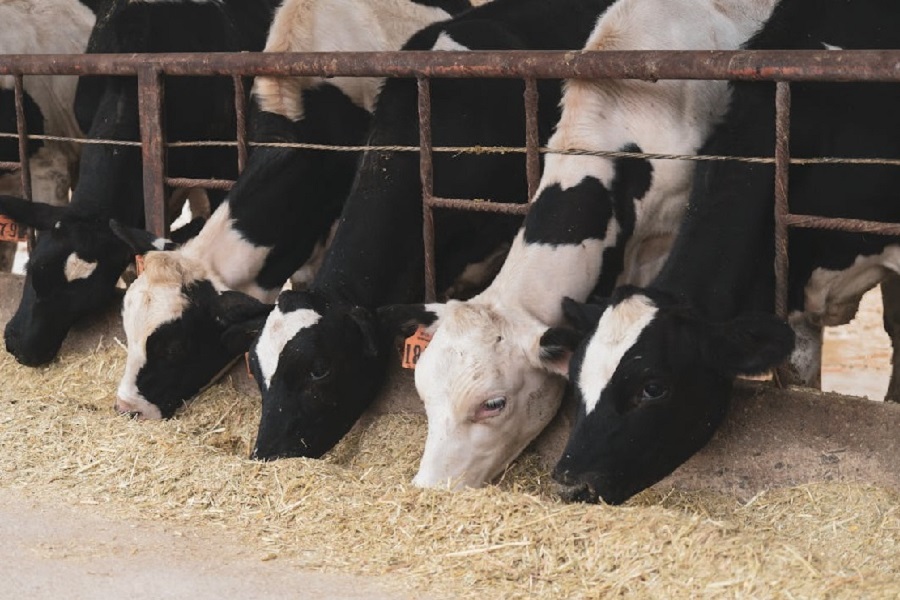Zinc trading range for the day is 224-228.2 - Kedia Advisory

Follow us Now on Telegram ! Get daily 10 - 12 important updates on Business, Finance and Investment. Join our Telegram Channel
Gold
Gold closed with a modest gain of 0.21% at 58,946 as investors remained concerned about several factors. These concerns included the hawkish stance of the Federal Reserve, uncertainty regarding global economic growth, and disappointing economic data from Europe. Additionally, the stronger US dollar weighed on the appeal of gold as a safe-haven asset. During its recent meeting, the US central bank decided to keep interest rates unchanged, as expected. However, it signaled the possibility of another rate hike before the year's end and a reduction in the number of rate cuts expected in 2024. In Europe, the Bank of England surprisingly paused its interest rate tightening cycle. Meanwhile, the Eurozone continued to experience a contraction in business activity, as indicated by the PMI data. The Bank of Japan maintained its ultra-easy monetary policy with the aim of achieving a sustainable 2% price stability target, along with wage increases. In contrast, the demand for Australian bullion sharply declined for the second consecutive month in August. Sales of both gold and silver products reached their lowest point in over three and a half years. From a technical perspective, the market saw short covering, with a notable -11.4% drop in open interest, settling at 6,612 contracts. Gold found support at 58,785, with the possibility of testing 58,630 levels. Resistance was observed at 59,040, and a breakout could lead to testing the 59,140 level.
Trading Ideas:
* Gold trading range for the day is 58630-59140.
* Gold gains as investors fretted about a hawkish Fed, global growth prospects.
* Fed left interest rates unchanged as widely anticipated, but signaled another rate increase before the end of the year.
* In Europe the tightening cycle has likely come to an end, with the Bank of England unexpectedly opting for a halt in interest rates.
Silver
Silver closed with a resilient gain of 0.37% at 73,337, despite lingering uncertainty about the Federal Reserve's future rate decisions. The Federal Reserve chose to keep interest rates unchanged but remained open to potential policy tightening. This aligns with the trend of several global central banks opting for higher interest rates to curb inflation. The Japanese yen experienced a significant decline against the dollar as the Bank of Japan maintained its super-low interest rates and unchanged yield control policy, offering no clear indication of a policy shift. Australian bullion demand saw a sharp decline for the second consecutive month in August, based on data from The Perth Mint of Australia. Sales of gold and silver products hit their lowest levels in over three and a half years. Minted silver coin and bar sales in August dropped by 8.2% from July and 52.1% from August 2022. Year to date, cumulative silver sales from the Perth Mint decreased by 27.5% compared to the same period last year. From a technical perspective, the market displayed signs of short covering, with open interest dropping by -3.12% to 15,177 contracts. Silver found support at 72,950, with the potential for testing 72,570 levels. Resistance was identified at 73,745, and a breakout could lead to testing 74,160 levels.
Trading Ideas:
* Silver trading range for the day is 72570-74160.
* Silver prices showed resilience despite lingering uncertainty over Fed’s rate trajectory.
* Dollar near six-month highs, yields at 16-year high
* Central banks approaching the end of policy tightening
Crude oil settled slightly down by -0.13% at 74.73, despite earlier gains driven by concerns about Russia's ban on fuel exports. The Russian government imposed the ban to stabilize domestic fuel prices, following a significant drop in diesel exports in September. US crude inventories decreased, particularly in Cushing, Oklahoma. Morgan Stanley raised price forecasts due to supply deficits. In the US, official data revealed a 2.135 million barrel decrease in crude inventories last week, with stocks in Cushing, Oklahoma, reaching their lowest levels since July 2022. This data reflects tightening supply conditions. Morgan Stanley raised its quarterly forecasts for Brent oil prices in 2023 and 2024 due to a supply deficit resulting from output cuts by Saudi Arabia and Russia. While the market deficit is expected to support oil prices, the bank believes that prices above $100 per barrel would be considered high. From a technical perspective, the market witnessed fresh selling despite a slight increase in open interest by 0.32% to 6,829 contracts. Crude oil found support at 7,402, with potential testing of 7,331 levels. Resistance was identified at 7,562, with the possibility of testing 7,651 levels.
Trading Ideas:
* Crudeoil trading range for the day is 7331-7651.
* Crude oil settled flat after prices gained amid concerns that a Russian ban on fuel exports.
* The Russian government announced it will temporarily restrict exports of gasoline and diesel to stabilize fuel prices in the domestic market.
* Morgan Stanley raises quarterly Brent oil price forecasts
Natural gas
Natural gas settled marginally lower by -0.05% at 218.7, primarily due to updated weather forecasts indicating milder conditions than previously anticipated. The potential for a demand-reducing storm on the East Coast over the weekend also contributed to the market's uncertainty, along with a decrease in natural gas flowing to LNG export facilities. The U.S. Energy Information Administration (EIA) reported a 64 Bcf injection into domestic storage for the week ending September 15, aligning with market expectations and tighter than the five-year average injection of 84 Bcf. Total Lower 48 working gas in underground storage stood at 3,269 Bcf, which is 183 Bcf (5.9%) higher than the five-year average. Wood Mackenzie estimated the market to be around 2.6 Bcf/d tighter than the previous five-year average when considering degree days and normal seasonality. Despite this, the updated weather forecast indicates "exceptionally comfortable and bearish" conditions through the first week of October, with much of the country experiencing "perfect fall temperatures," according to NatGasWeather. Meteorologists anticipate near-normal weather in the lower 48 states until around September 26, followed by a period of mostly warmer-than-usual conditions from September 27 to October 7. From a technical standpoint, the market witnessed long liquidation, with a significant -24.18% drop in open interest, settling at 15,484 contracts. Natural gas found support at 215.7, with the potential for testing 212.7 levels. Resistance was identified at 222.2, and a move above could lead to testing 225.7 levels.
Trading Ideas:
* Naturalgas trading range for the day is 212.7-225.7.
* Natural gas dropped on lower LNG feedgas, weekend storm
* EIA reported a 64 Bcf injection into domestic storage facilities for the week ending Sept. 15.
* Total Lower 48 working gas in underground storage ended the period at 3,269 Bcf higher than the five-year average.
Copper
Copper settled lower by -0.45% at 718.3 due to several factors. A stronger US dollar, elevated inventories, and reduced risk appetite following the Federal Reserve's indication of prolonged restrictive policy all weighed on copper prices. Copper inventories in Shanghai Futures Exchange warehouses declined by 16.9% in a week, signaling some supply tightening. However, inventories in LME-registered warehouses remained high, with data from the ICSG showing a surplus in the copper market from January to July. The discount for near-term copper delivery compared to the LME three-month contract reached a four-month high, indicating ample immediate supply. Southern Copper, a significant copper producer in Peru, expects a 17% increase in its copper production this year, reaching 400,000 metric tons. This growth is driven by improved operations following disruptions from community protests last year. In terms of market balance, the global refined copper market showed a 19,000 metric ton deficit in July, a decrease from the 72,000 metric ton deficit in June, as reported by the International Copper Study Group (ICSG). Technically, the market experienced fresh selling, with a notable 12.43% increase in open interest, settling at 6,640 contracts. Copper found support at 716.1, with potential testing of 713.9 levels, while resistance was observed at 722.2, and a move above could lead to testing 726.1 levels.
Trading Ideas:
* Copper trading range for the day is 713.9-726.1.
* Copper dropped amid strong dollar and high inventories
* Inventories in LME-registered warehouses remained at their highest level since May 2022
* Copper inventories in warehouses monitored by SHFE fell 16.9% from last Friday.
Zinc
Zinc rose by 0.73% to settle at 226.4, thanks to positive data and stimulus measures from China, the world's leading zinc buyer, as well as expectations of reduced production. China's July data revealed a significant intake of 76,800 metric tons of zinc, the highest monthly figure since April 2019. On the supply side, China's refined zinc output increased this year, but the market faced challenges due to low inventory levels and tight time spreads. Smaller zinc mines, particularly in Europe and Australia, struggled with profitability due to high operating costs and falling prices. Almina-Minas do Alentejo in Aljustrel, Portugal, recently suspended zinc mining operations until Q2 2025. However, zinc's further gains were restrained by caution following the Federal Reserve's hawkish stance. In August 2023, SMM China reported a 4.46% month-on-month decrease in refined zinc output, but it remained 13.78% higher year-on-year, falling short of expectations. From January to August, cumulative refined zinc output reached 4.3 million metric tons, a 10.08% increase year-on-year. Domestic zinc alloy production in August was 700 metric tons lower than the previous month, standing at 86,200 metric tons. From a technical perspective, the market saw fresh buying, with open interest increasing by 58.33% to settle at 3,895 contracts. Support for zinc was observed at 225.2, with the potential to test 224 levels, while resistance was identified at 227.3, and a move above could lead to testing 228.2 levels.
Trading Ideas:
* Zinc trading range for the day is 224-228.2.
*Zinc gains amid positive data and stimulus measures from and expectations of reduced production.
* The market remained impacted by dwindling inventory levels and constrained time spreads
* Almina-Minas do Alentejo in Aljustrel was the latest zinc mine to undergo suspension until the second quarter of 2025
Aluminium
Aluminium saw a 0.64% increase, settling at 205.8, driven by supply pressures and signs of higher demand. China's social inventory of aluminium ingots decreased by 7,000 metric tons from September 18 but remained 3,000 metric tons higher than on September 14. Year-on-year, this inventory was down by 161,000 metric tons, the lowest level for the same period in five years. In mid-September, increased aluminium billet supply from August led to rising arrivals, shifting from under 70,000 metric tons to over 90,000 metric tons. The growth rate of domestic aluminium supply slowed, the import window remained open, and overseas aluminium ingot supply increased. Due to fewer arrivals and pre-holiday stocking, both aluminium ingot and billet stocks fell during the week. The People's Bank of China conducted reverse repurchase operations, injecting a net liquidity of 141 billion yuan as 110 billion yuan of 7-day reverse repos expired. Technically, fresh buying was evident with a significant 42.87% increase in open interest, settling at 3,649 contracts. Aluminium found support at 204.7, with potential testing of 203.6 levels, while resistance was identified at 206.5, and a move above could lead to testing 207.2 levels.
Trading Ideas:
* Aluminium trading range for the day is 203.6-207.2.
* Aluminum gains as supply pressures magnified signs of higher demand.
* China's social inventory of aluminum ingots was 522,000 mt, a decrease of 7,000 mt from September 18
* People's Bank of China conducted a 169 billion yuan 7-day reverse repurchase operation
Cotton
Cotton candy prices saw a 0.26% increase, closing at 60,700, driven by reports of pink bollworm infestation in Haryana's cotton belt. The global cotton industry faces production and consumption reductions in the 2023-24 outlook. In the U.S., projections for 2023/24 include lower cotton production, exports, and ending stocks. Beginning stocks for 2022/23 were also increased due to large warehouse stocks, affecting projections. India's cotton sowing dropped by 3.65 lakh hectares due to poor monsoon conditions in Gujarat, mill closures, and low stock of old cotton crops. New cotton crops have started arriving, with prices above the minimum support price. Cotton picking is gaining momentum in some Indian states, and the market expects increased arrivals after September 15. Telangana's cotton area decreased due to unfavorable conditions, but picking is expected to accelerate in November. The pre-sowing price forecast for cotton in 2023-24 anticipates normal rainfall and expanded crop area. In the Rajkot spot market, prices closed at 29,181.45 Rupees, down by -0.01%. Technically, the cotton candy market witnessed fresh buying with a 1.01% increase in open interest, settling at 100 contracts. Support is at 60,400, with potential testing of 60,110, while resistance is at 60,980, with a move above possibly testing 61,270.
Trading Ideas:
* Cottoncandy trading range for the day is 60110-61270.
* Cotton gains after reports the cotton belt of Haryana, is witnessing an attack by pink bollworm.
* However, heavy rainfall in China's Xinjiang region is expected to impact cotton quality and quantity.
* China's cotton production was lowered to 5.9 million metric tons on reduced planted area for 2023/24
* In Rajkot, a major spot market, the price ended at 29181.45 Rupees dropped by -0.01 percent.
Turmeric
In the recent turmeric market, prices saw a slight decline of -0.39% settling at 14378 due to increased supply offerings. This drop was primarily influenced by reports of beneficial rains for standing crops, which boosted farmer confidence. However, the situation remains complex as turmeric cultivation has decreased in states like Maharashtra, leading to uncertainty in price trends and supporting higher prices. The upcoming week is expected to bring normal to above-normal rainfall to Maharashtra and Telangana, which could enhance the growth of turmeric crops. Despite this positive development, the overall supply of turmeric remains limited. Export enquiries have been subdued, adding pressure to prices. Notably, there is an anticipation of a 20-25% decrease in turmeric sowing this year across various states. On the export front, there has been a 15.05% rise in turmeric exports from April to July 2023 compared to the same period in 2022. However, July 2023 saw a drop of 24.60% in exports compared to June 2023, highlighting some volatility in the market. Looking at the technical aspect, the market is currently undergoing long liquidation, with open interest remaining unchanged at 13785. Prices have fallen by -56 rupees. Turmeric is finding support at 14072, and if it goes below this level, it may test 13766. On the upside, resistance is expected at 14652, and a move above this level could push prices to test 14926.
Trading Ideas:
* Turmeric trading range for the day is 13766-14926.
* Turmeric dropped due to increased offerings in the wake of reports that recent rains may be helpful for standing crops.
* Supplies are down whereas production prospects are also looking bleak
* The upcoming week is expected to bring normal to above-normal rainfall to Maharashtra and Telangana
* In Nizamabad, a major spot market, the price ended at 13691.25 Rupees gained by 0.63 percent.
Jeera
Jeera prices experienced a modest decline of -0.31%, settling at 60175, as traders engaged in profit booking following recent gains driven by reduced local supplies. The market saw heightened demand due to festive occasions and the limited availability of high-quality crops, prompting millers to buy whenever prices dipped. Despite this, Indian jeera remained competitively priced in the global market, which subdued overseas demand. The upcoming months bring added uncertainty to the market, as there's a possibility of China resuming purchases of Indian cumin in October-November before the arrival of new cumin crops. According to FISS forecasts, cumin demand is projected to exceed supply this year, with demand estimated at 85 lakh bags and a likely supply of 65 lakh bags. In terms of exports, Jeera shipments from April to July 2023 dropped by 7.99% compared to the same period in 2022, with a substantial 58.23% drop in July 2023 compared to July 2022. The backdrop of these market dynamics is the anticipation of heavy monsoon rains in India, which have been long-awaited after an exceptionally dry August that adversely affected some summer crops. From a technical perspective, the market is undergoing a phase of long liquidation, with open interest decreasing by -0.38% to settle at 4764, accompanied by a price drop of -190 rupees. Jeera is currently finding support at 58980, and if it goes below this level, it may test 57770. On the upside, resistance is expected at 61920, and a move above this level could push prices to test 63650.
Trading Ideas:
* Jeera trading range for the day is 57770-63650.
* Jeera dropped on profit booking after prices gained due to shrinking supplies in the local market.
* Increased festive demand and limited availability of quality crops in the market is prompting miller to buy
* However, sluggish export demand is still a major concern for Indian traders
* In Unjha, a major spot market, the price ended at 60688.35 Rupees dropped by -0.11 percent.
























